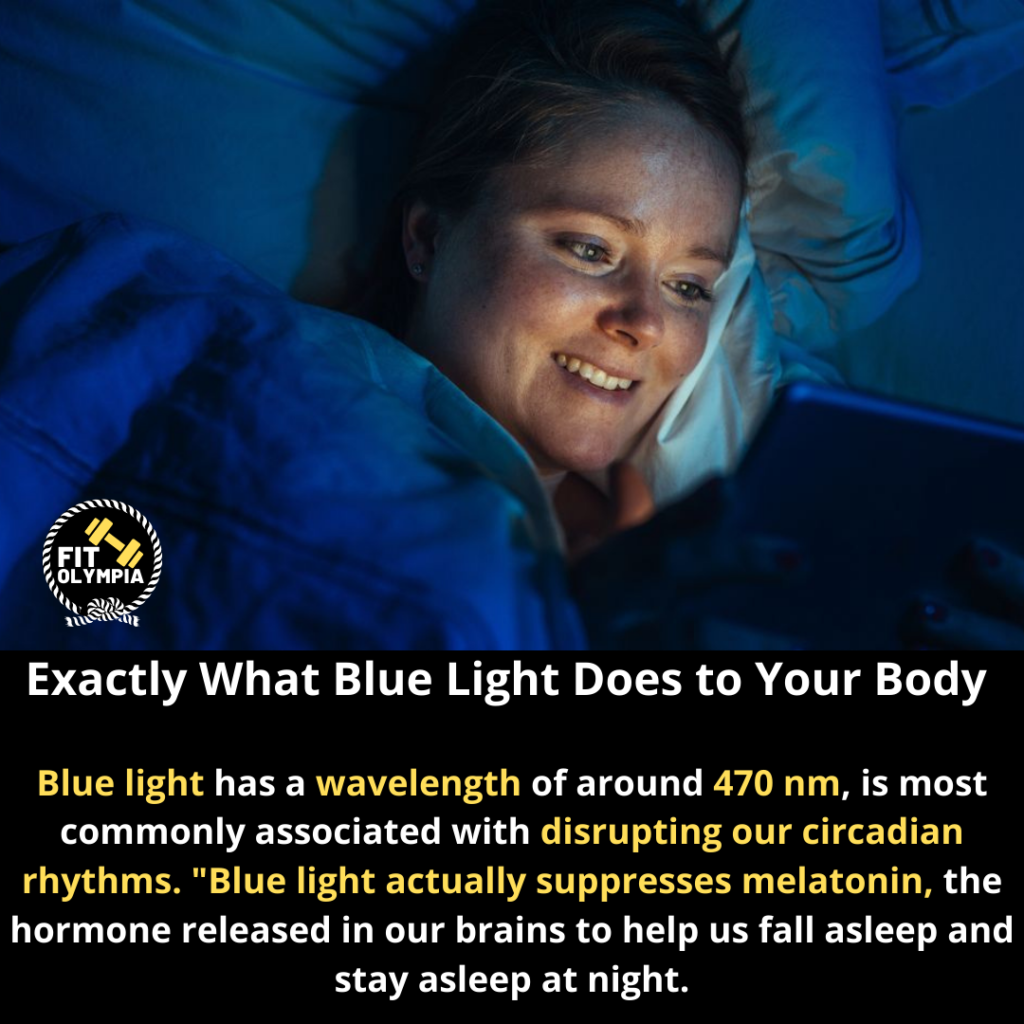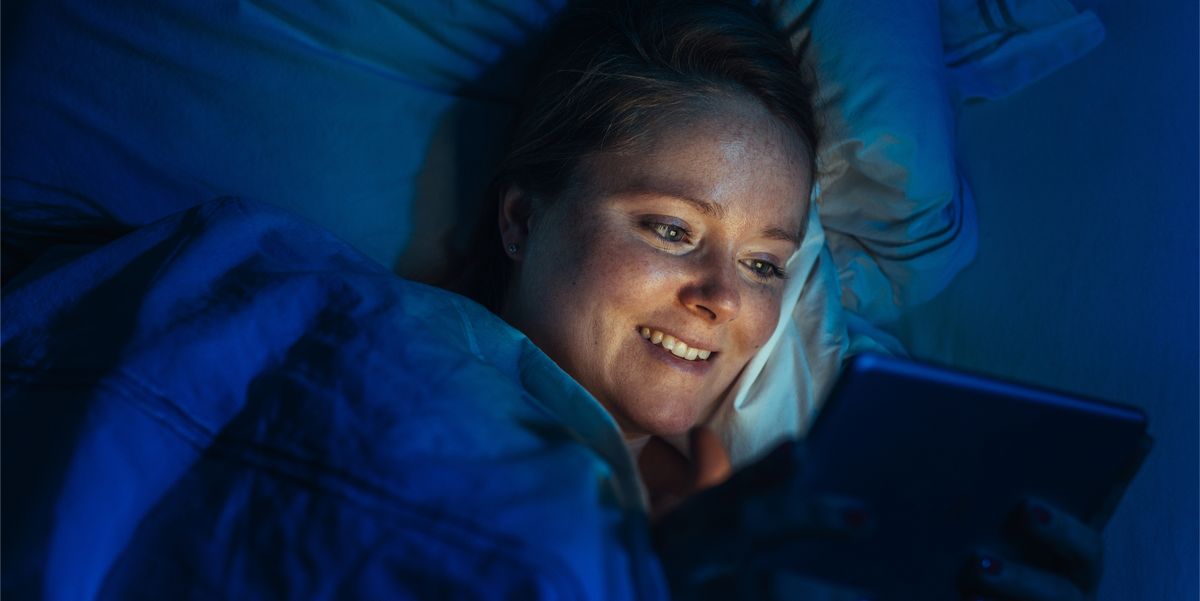Doctor Explain Exactly What Blue Light Does to Your Body
Here’s what you can do to minimize the effects.
Follow us on Instagram at fitolympia1.

When it comes to the way in which light affects the human body, in particular our eyes, it’s all about wavelength; the longer the wavelength, the less of an impact it has on you. Red and green light have minimal effects, as they are under 550 nanometers (nm), whereas ultraviolet light, also known as UV, is more harmful at 400 nm.
Blue light, which has a wavelength of around 470 nm, is most commonly associated with disrupting our circadian rhythms.
“The most evidence we have for how blue light affects your health is through our biological clock,” he says. “Blue light actually suppresses melatonin, the hormone released in our brains to help us fall asleep and stay asleep at night. If you’re exposing yourself to blue light at night, it can make you less sleepy.”
While lots of different colors of light have this effect, Mike cites a Harvard study which found blue light suppresses melatonin at almost twice the rate of green light, and shifts the circadian rhythm twice as much.
There is a positive aspect to this. When you wake up in the morning, opening the shades to let the daylight in will help to wake you up, as it contains blue light and will contribute to the suppression of that sleep hormone, resetting the circadian rhythm for the following night.
Mike’s advice for minimizing the effects of blue light on our sleep patterns are to have zero screen-time for a minimum of 2 hours before bed, and use dimmer lights in your home in the evenings. He also suggests blue light-proof spectacles if you are required to use a screen for work late at night.
Contrary to popular opinion, being exposed to blue light via laptop and phone screens does not cause eyestrain, says Mike; this occurs due to intense focus and concentration, which often involves less blinking, which leads to dryness and irritation. This can be combated by staying at least 2 feet away from your screen, using eyedrops, and employing the 20/20/20 rule: every 20 minutes, stare at a fixed point 20 feet away for 20 seconds to relax the eyes.







